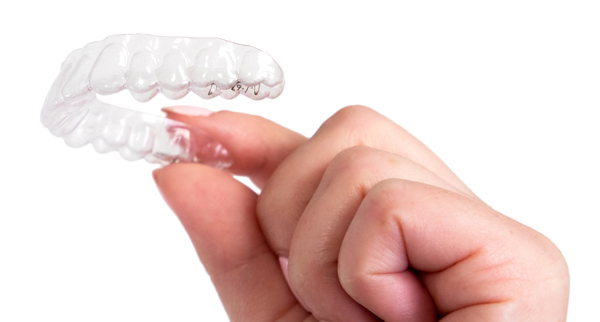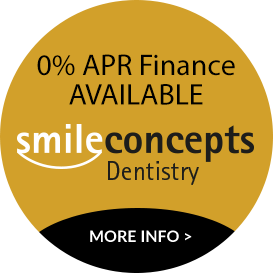Clear Correct Q&A
Frequently Asked Questions about Clear Correct Aligner Treatment
To help you understand more about aligner treatment in general, ClearCorrect® have created this video which explains how the treatment works and the biological processes involved. It will also help to you to ensure the best outcomes possible are achieved with your treatment.
What should I expect during treatment?
While wearing clear aligners is generally not painful, there will be brief periods, days not weeks, when the new aligners may cause the teeth to be uncomfortable.
Your ‘bite’ could also feel different from time to time while the teeth are in transition. You may have a lisp at first while becoming accustomed to talking with the aligner on. This usually resolves after a few days of getting used to wearing the aligner.
You may need engagers, a small tooth coloured bump temporarily placed on the tooth which will help the aligner to move the tooth.
How comfortable are the aligners? Will the aligners hurt?
It’s fairly common to experience some tenderness or discomfort for the first few days of wearing a new aligner. However, the more you wear the aligner the more comfortable they become.
The aligners can also sometimes temporarily affect your speech. But most people adapt quickly to wearing the aligners and it is rare that your speech would be impaired for an extended period of time. You may also experience a temporary increase in salivation or dryness of the mouth. ClearCorrect aligners are among the most comfortable in the industry. Similar to braces, if aligners change too abruptly between steps, they can cause unnecessary discomfort. ClearCorrect aligners employ a unique system which balances your comfort and treatment time.
Are the aligners hard to keep clean? How do I clean them?
No. The aligners are fairly simple to keep clean. However, tooth decay, periodontal disease, decalcification (permanent markings on the teeth) or inflammation of the gums may occur if proper oral hygiene and preventative maintenance is not maintained.

ClearCorrect aligners can be cleaned with a toothbrush and cool soapy water. Cleaning and disinfection tablets are also available.
I’ve seen people with bumps on their aligners – what are they?
Depending on your treatment, it may be necessary to temporarily affix engagers (those weird bumps) to your teeth. They’re made of tooth-coloured resin material and are there to assist with difficult tooth movements. When you’re not wearing your aligners they can feel strange in your mouth, but don’t worry, they will be easy to remove and are only used when absolutely necessary.
How long will I be in treatment?
That depends entirely on the treatment goals you set with your dentist, and the amount of correction that needs to be achieved. Treatment time can at times exceed estimates. Poor compliance, missing appointments, excessive bone growth, poor oral hygiene and broken appliances can make treatment time longer, increase costs and affect the quality of your results.
Treatment time can also vary considerably depending on an individual’s health and physiology. Much of orthodontic tooth movement relies on metabolism and bone remodeling. Further, the rate of tooth movement is not always linear and also depends on the type of movement being performed. For these reasons, treatment times are estimates based on the dentist’s clinical findings and experience.
What is the daily wear schedule?
It’s recommended that you wear the aligners 22 hours a day. They should be removed only for meals, brushing and flossing before re-inserting the aligner. If not worn for up to 22 hours a day, the corrective process can be halted and within a few hours begin to reverse. It can then take several days for this process to start up again.

Wearing your clear correct aligners twenty-two hours a day is key to achieving your treatment goals.
Do I have to wear the aligners forever? What will happen when I’m done with treatment?
While the treatment aligners will have a determined period of wear based upon the treatment goals, retainers will be recommended once treatment has been completed. This will be discussed during the assessment and planning stage.
What are the clear aligners made of?
ClearCorrect aligners are made from a plastic which has been specially formulated for ClearCorrect. It is a polyurethane resin that has been crafted and tested extensively to make it a superior plastic for clear aligners. It leads the class in stress retention, crack & impact resistance, clarity, and stain resistance. And, of course, it has been thoroughly tested for biocompatibility.
Do the aligners contain BPA or phthalates?
No. ClearCorrect aligners are made without BPA or phthalates.
What do I do before my treatment starts?
If you are interested in improving your smile then the next step is to arrange a complimentary brief consultation to discuss your suitability for ClearCorrect®, and all the treatment options available to you. Here we will also be able to give you some guidance of the fees involved and how long your treatment might take.
You will then need a full examination to ensure you are dentally fit, before we then complete the assessment for orthodontic treatment. This includes taking photos and moulds of your teeth, and any necessary x-rays to ensure there are no hidden problems. ClearCorrect will then be able to create an interactive treatment set-up which will show the potential outcome, and how many stages are required to achieve this. Once you have approved this we can then instruct ClearCorrect to manufacture your aligners and get your treatment underway!
For Any More Questions About Your Clear Correct Treatment

